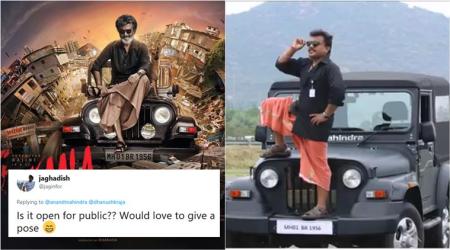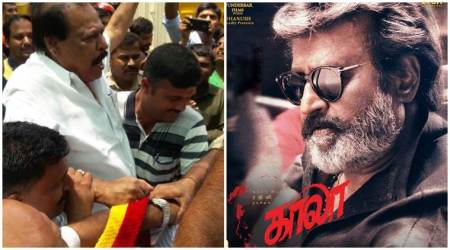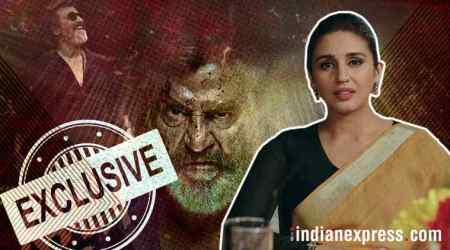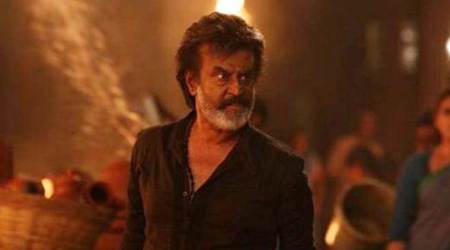
Kaala decoded: Pa Ranjith and Rajinikanth give us an epic with an Asura in the lead
Written by Ashameera Aiyappan | Chennai | Pu..
Written by Ashameera Aiyappan | Chennai | Published: June 8, 2018 12:12:08 pm Kaala hit the screens on June 7. Related News

Kaala fever: Anand Mahindras employees pose like Rajinikanth on CAR THRONE; Thalaivar fans want to COPY them

Rajinikanths Kaala shows cancelled in Bengaluru

Kaala box office prediction: Rajinikanth starrer expected to earn Rs 25-30 crore on its opening day
Even before Kaalas release, I was pretty intrigued by the nickname Karikalan had been given. He was referred to as the Otha Thala Ravanan (Single headed Ravan). The reference had gotten me quite excited, primarily because it was Superstar Rajinikanth who was playing Ravanan. Mythological re-interpretations are not new to Kollywood. Mani Ratnam has given us his version of Ramayana and Mahabharata; the latter had Rajinikanth as well. Even the story of a vigilante gangster in the slums of Dharavi isnt new — we have a classic that will be cherished by generations from Mani Ratnam again. But what Ranjith has done is mashed the two together, giving us a revolution dressed in black and blue clothes.
Both history and mythology have a common factor — they predominantly narrate the tale from the point of the victory stand. In re-interpreting it from the other side, a lot of prejudices get challenged. Similar to Anand Neelakantans Asura or Mani Ratnams Raavanan, the protagonist here is an asura. While several narratives stop at planting a seed of confusion in the audiences mind about their allegiance. Ranjith takes a step forward and makes the Asura the unparalleled hero. He retains the conventional qualities of an Asura — naughtiness, dark-skinned and of course, violence. He gives a reason for the protest and the violence so that our loyalties are not questioned.
Ranjith plays with the mythology in several more obvious ways — Nana Patekars character is named Hari. In more than one instance, Rajini is referred to as the Asura kula Thalaivan (The leader of Asuras). Hari Dada wants to rename Dharavi as Dandakaranya, the forest Rama spent his exile. Haris real-estate company is named Manu. He quotes Mahabharata and calls himself Rama and also says, “Valmiki has written it already. Rama has to kill Ravana, isnt it?” This lord is omnipresent (his face is everywhere through the hoardings) and is born to rule. In another subversion, Kaala gets to have four sons and sends one of them (Lenin) for a Vanavasam (forest exile).
The most obvious juxtaposition should be the final few sequences in the film where a voice over of the Ramayana is juxtaposed with the violence that happens in Dharavi. And in this sequence, Kaala gets an Agnipariksha moment. Sita walked through the fire to prove her purity to Rama, but here Kaala goes through the test for something else. He walks through the flames to show his conviction in his ideology that he isnt the face of the revolution; if Kaala isnt there several more faces would crop up. The idea is planted in our minds a while before this moment occurs. Kaala has a support system throughout the film but when he gets a voluntary human-shield in the face of violence to protect him, it is natural you begin to question it. The climax shows the poignant triumph of ideology, even more so because the face killed on-screen belongs to Rajinikanth. But Kaala doesnt really die, does he? He exists in the black powder that a kid throws on Hari dada, in every face that swarms around him as a barrier. Just like mythology does, Kaala lives in the minds of the survivors, telling his story to an audience who revere him.
For all the latest Entertainment News, download Indian Express App
© IE Online Media Services Pvt Ltd More Related News
-

Rajinikanths Kaala will unite people: Huma Qureshi
-

Rajinikanths Kaala leaked on Tamilrockers; fans express disappointment
- Tags:
- kaala
- Rajinikanth

